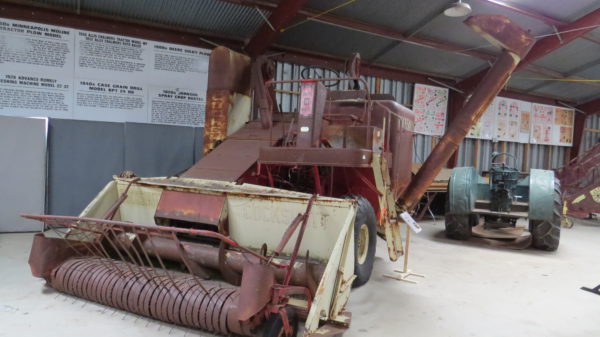Cockshutt entered combine production in the late 1930s with the introduction of the Number 6 pull type combine.

Well before the Second World War wound down to an end, Cockshutt began planning for the post war period. Cockshutt recognized that the reduced agricultural equipment manufacture resulting from the war along with increased agricultural production would result in the existing stock of farm equipment being worn out by the end of the war. As well farmers would have built up significant bank balances due to decent prices and demand for agricultural products. So there would be good demand after the war for modern farm machinery.
In addition, Cockshutt had modernized their manufacturing plants to manufacture war material for the government. In many cases the government had actively assisted manufacturers, including Cockshutt, to obtain modern manufacturing equipment and develop the needed technical skills to operate this equipment. As well war demands had also resulted in manufacturers being able to increase their engineering staff. Cockshutt as a result had greatly increased capabilities as a company.
One of the first wave of new products for the post war period was the development of a self-propelled combine. The Models SP109 and SP110 were in farmers’ fields in the fall of 1944 and were well received. Cockshutt developed the self-propelled combine line further after the war and introduced further models offering further developments such as hydraulically controlled tables, power steering and variable sheave traction drive.
The MAM collection contains a Cockshutt 428 self-propelled combine. The 428 was in production between 1956 and 1962. The standard 428 come with a 12 foot header however 10 or 15 food headers were offered as options. Other standard equipment included a Chrysler flat head 6 cylinder industrial engine offering 76 horsepower and a Cockshutt Drive-O-Matic traction drive which was a four speed transmission coupled to a variable sheave drive. The variable sheave drive was hydraulically controlled off a foot pedal on the operator’s platform. This combination offered ground speeds varying from 5/8 to 9 MPH. The table was hydraulically raised and lowered.
The cylinder had 8 rasp bars and was 311/4 inches long and 21 7/8 inches in diameter. The speed of the cylinder could be varied from 727 rpm to 1178 rpm. The separation area was 32 inches wide and 117 inches long.
Accessories included a retractable finger auger on the table, lights, a pickup reel with 4 or 6 inch tooth spacing, ScourKleen auxiliary recleaner, slow speed cylinder sprockets, straw spreader and hour meter.
The Cockshutt Model 427 was essentially the same machine only a smaller engine was used which offered only 72 horsepower.


